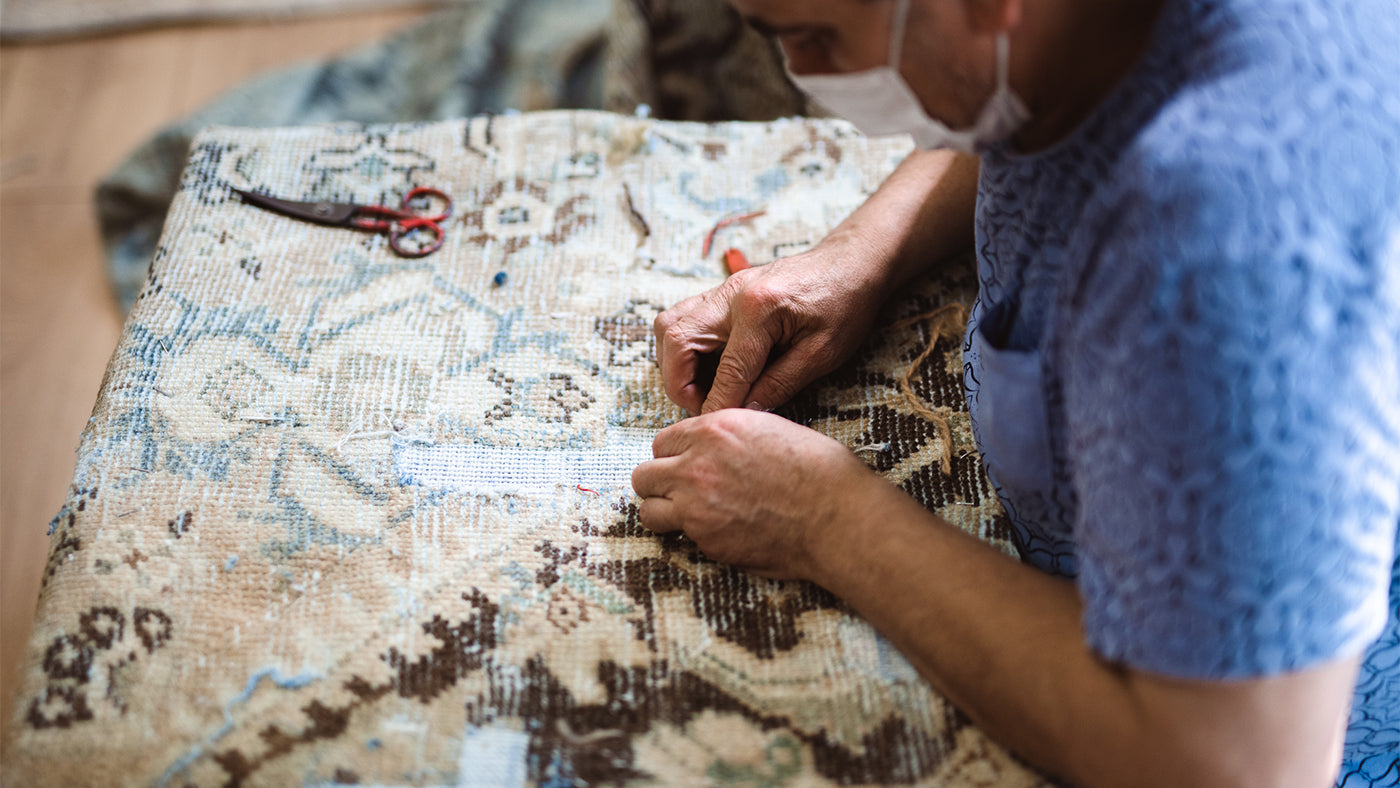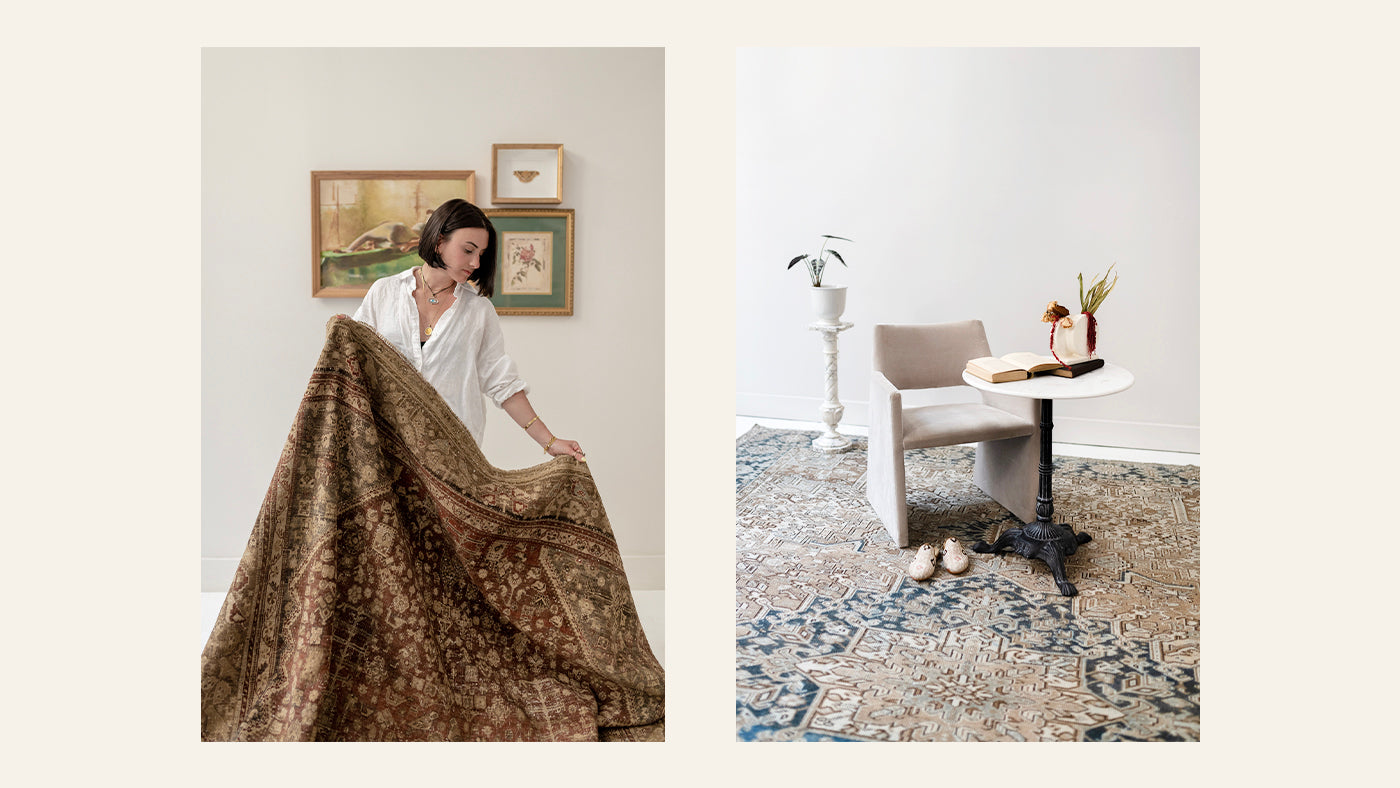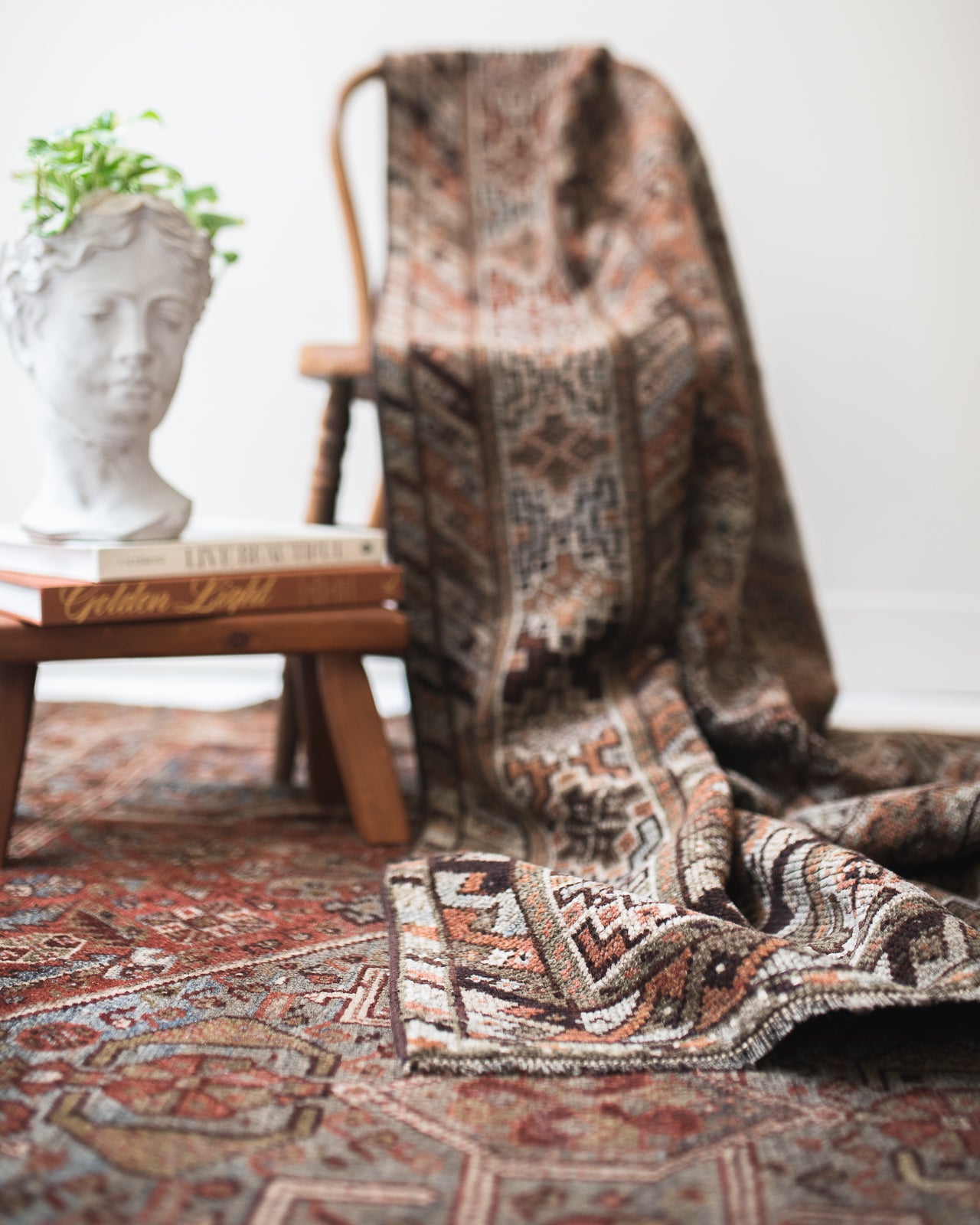If you’ve never owned a vintage rug and you’re in the market for a new rug for your home, you may begin to ask yourself “what’s the difference between a handmade rug and a machine made rug? Why are handmade rugs so expensive?”. Or maybe you already know that handmade rugs are more durable and all natural – but you’re not entirely sure about the structure of the rug, or how it’s made to be so durable.

We want to help you understand how these rugs are made by hand, so let’s go back to the basics of a handmade rug and talk about the foundation of a rug; the difference between the warp and weft, two keywords you’ve probably heard before but maybe didn’t fully understand.
Okay, let’s get a (short) glossary going…
WARP: the core structure of the rug: vertical fibers attached to a loom
WEFT: the fibers knotted or woven through the warp fibersKNOTTED: weft fibers are tied tightly around the warp fibers, creating knots (aka hand knotted)
WOVEN: weft fibers are woven in and out of the warp fibers
KPSI: knots per square inch (aka hand woven)
PILE: the face of the rug (what you walk on), built up by knots (aka the weft)

hand knotted vs hand woven rug
When the pile of a rug is hand knotted over a warp. It is protected by the weft and therefore, considered more durable; this is also when you might hear someone reference a rug's pile as ‘wool on wool’ or ‘wool on cotton’ (we’ll come back to this later!). A flat weave pile has an exposed warp, giving the rug flexibility and is considered very thin.
Almost all of our Rugs are hand knotted. Items found in The Souk (like our kilim shoes and bags), are handmade from salvaged kilim, aka hand woven.
Hand knotted Pile
The warp of a hand knotted rug (the vertical fibers) on the left. The weft (the horizontal fibers) on the right, see illustration below.
Hand Woven Pile
The warp of a woven rug (the vertical fibers) on the left. The weft of a woven rug (the horizontal fibers) on the right, see illustration below.

wool on wool vs wool on cotton
Let’s chat about what it means when we say ‘wool on cotton’ or ‘wool on wool’. All of our rugs (with the exception of the goat hair and hemp), are considered to be wool because the pile, the surface that you walk on, is wool. However, the foundation (or the warp) can be cotton OR wool. So if a rug is considered ‘wool on cotton’ this means that the wool was wrapped and knotted around cotton vs a ‘wool on wool’ rug, which means both the warp and weft are made of wool. The easiest way to determine the foundation of your rug is by looking at the fringe of your rug. If it’s cotton, that means it’s wool on cotton; if it’s wool, then it’s wool on wool.
Tribal vs City Rug
The photo below represents a Qashqai rug with a wool on wool pile (on the left), a much lighter rug with movement to it. On the right, a classic Heriz style with a wool on cotton pile, a much denser pile and significantly heavier.

One is not better than the other, this simply comes down to personal preference. Wool is one of the strongest fibers but it is not as dense as cotton, so therefore a wool on wool rug may appear to be ‘floppier’ or thinner than a wool on cotton rug. Most village or tribal rugs (like a Shiraz or Qashqai) are wool on wool because these weavers had access to an abundance of wool vs city rugs (like Tabriz or Heriz) which are wool on cotton.
Now that we’ve covered the basics, let’s dive a little deeper. Aside from the foundation of a rug, it’s important to understand KPSI (knots per square inch), another determining factor in a rug's value and durability.
what is KPSI? what does it mean?
KPSI (knots per square inch) is literally the density or amount of knots tied onto the weft of your rug (aka the back of your rug).This varies based on design and fiber choice (wool vs cotton), and informs the complexity of the design and the strength or durability of a rug. To put it simply: the higher the KPSI, the tighter the weave, equaling to a more durable pile, thus increasing your rugs value. This is also how you can tell if your rug is handmade or machine made; the knots of an authentic handmade rug will mirror the front of the rug.
Wool is the thickest option, with capability of 120 KPSI, while cotton is less dense and can fit up to 400 KPSI. Silk rugs on the other hand, can be extremely intricate and contain up to 1200 KPSI!
Knots
The photo below represents demonstrates the knots on the back of a Malayer rug; the quarter is to demonstrate how many knots per square inch there are.

The pile of a rug is basically the height of the weft. This comes in many techniques, including tufted rugs (a commonly used technique in Moroccan rugs), but we're again going to zoom in on what is essential to Minimal Chaos. As most of our rugs are vintage hand knotted, the pile is usually low to medium with the occasional semi-plush. Pile is important to consider when matching a rug to the foot traffic it will experience. A rug with a high, loose pile will more easily gather debris and threads are at higher risk of wear (similar to Moroccan or hand-tufted rugs). A lower pile with tight knots may be less soft to the touch, but experience little wear even in high traffic areas with proper care.
A rugs pile can also be a clue to determining the age of a rug, seeing signs of wear on the pile of a rug indicates it has experienced a lot of foot traffic over the years. This can also be an indication that a rug has been shaven. Shaving the pile of a rug is a common practice, especially when cleaning a vintage or antique rug.
Plush Rug
The photo below represents a plush Heriz rug, as you can see, the pile of this rug is quite high; meaning the wool (or the pile of the rug) has not been shaven much, leaving it nice and plush. This will give your feet extra cushioning to walk on.

Bottom line is all of our rugs are a part of a long tradition of natural, long lasting and sustainable artisanship. Handmade attributes create the strongest and most sustainable rugs, and we stand by them as a conscious and purposeful alternative to buying new machine made rugs. Machine made rugs can't really hold up to these standards and are too-often part of a harmful economy based on plastics and mass production (check out our blog: "Why machine made rugs are so toxic").
Questions? Leave us a comment below!
Keep up with the newsletter for further rug education, tips and history!
thanks for reading, xo
Minimal Chaos













